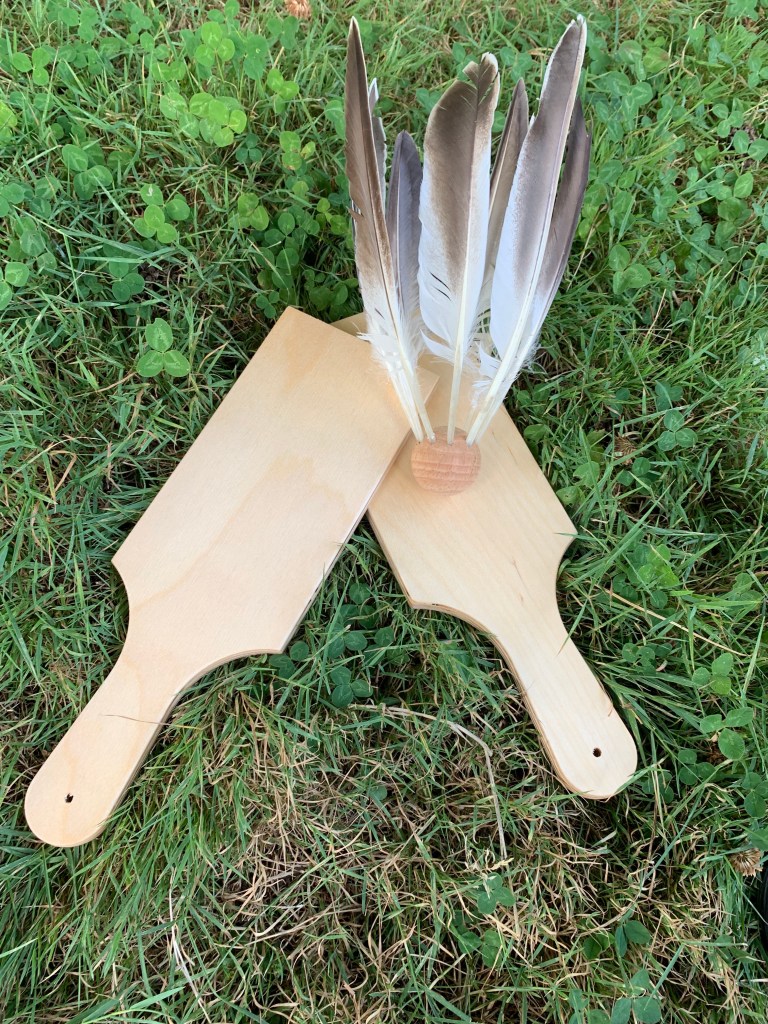Battledore (or shuttlecock, or battledore and shuttlecock, or jeu de volant) was the precursor to badminton. It’s played with two paddles (battledores) and a feathered “birdie” (shuttlecock). On Pinterest recently, I ran across this medieval image of two people (boys? youths?) playing battledore:

The players each hold a paddle, which look to me to be wooden and not particularly complex. (Side note: I’ve seen a few references to children in the early modern period using hornbooks to play battledore.) The birdie is clearly feathered, with an elongated body. During gameplay, the object was to keep the shuttlecock aloft as long as possible, batting it back and forth between two players.
As part of my historical games kick, I decided to put together a quick and easy battledore set:

This took me maybe 10 minutes to put together, and I got all the supplies on Amazon: I used two wooden paddles sold as ceramics tools, a cork ball, and some duck feathers. I gave the paddles a light sanding to make them feel better in my hand. For the shuttlecock, I used an awl to poke holes evenly around one “pole” of the cork ball and carefully stuck feathers into the holes. That’s it! Done! Ready to play!
If you wanted to do more, you could carve your own paddles, or paint them with your badge. Also, if you don’t want to shell out for a fancy cork ball, as you can see from the period image a standard cork is perfectly acceptable. I used a large cork I found in a park to make a second shuttlecock, and while I found that the cork ball is more balanced I don’t know how crucial that is to enjoying the gameplay.

